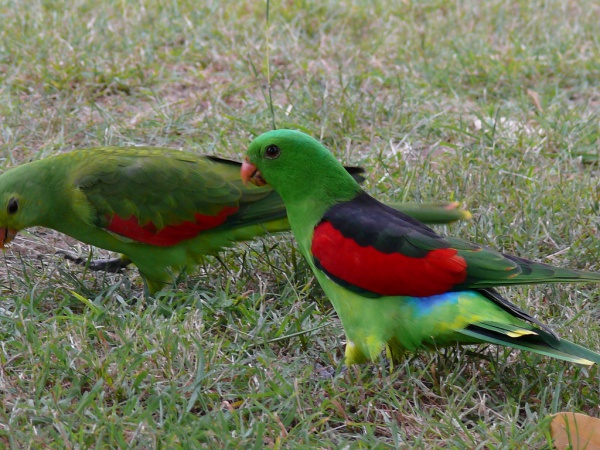Facts About Red-winged parrot
The red-winged parrot, native to Australia and New Guinea, is often found in grasslands, savannahs, farmlands, and woodlands. First described by German naturalist Johann Friedrich Gmelin in 1788, its name derives from Ancient Greek words meaning "red" and "wing." This vibrant bird, also known as the crimson-winged or blood-winged parrot, has three recognized subspecies.
Measuring approximately 30 to 33 cm in length, these parrots are unmistakable with their striking red wings and green bodies. Males are distinguished by a black nape and a blue patch on their lower back, while females exhibit a yellowish-green body with red and pink accents on their wings. Juvenile parrots have orange or yellow beaks and pale brown eyes. Males achieve their full adult plumage at around two years, while females mature slightly earlier, at about a year and a half.
Red-winged parrots inhabit areas ranging from Western Australia to Queensland, extending as far south as northeast South Australia, and occasionally venturing into southern New Guinea. They flourish in riverine forests, acacia scrub, savannas, and farmlands, and are often observed in pairs or flocks, particularly near water.
Their diet consists of seeds from eucalyptus and acacia trees, berries, flowers, and even insects. Their calls are distinctive, described as "ching-ching" "chink-chink" or thin screeches. The breeding season typically occurs in spring and summer. They nest in tree hollows about 11 meters high, where the female incubates three to six white eggs. The chicks remain with their parents for around five weeks.
Interestingly, red-winged parrots can hybridize with Australian king parrots, producing fertile offspring that inherit traits from both parent species.
